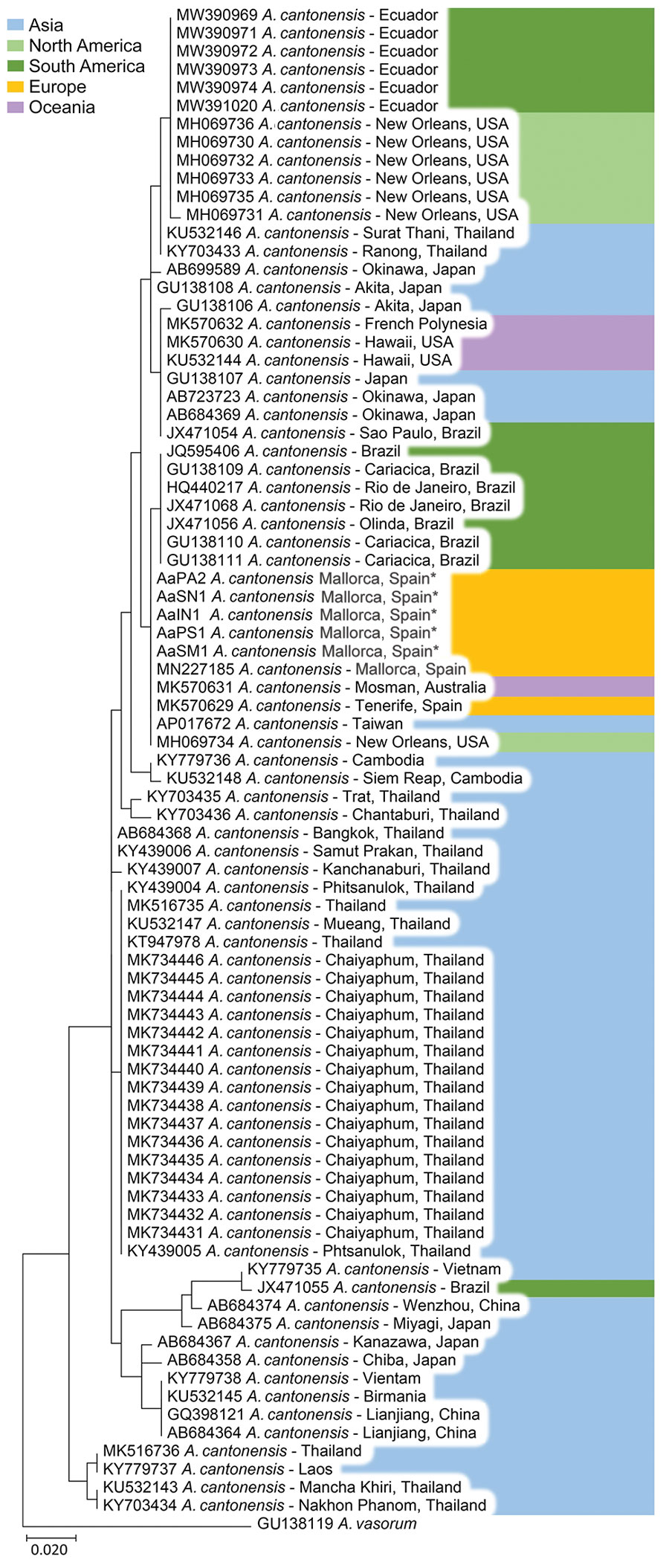Volume 28, Number 6—June 2022
Research
Angiostrongylus cantonensis Nematode Invasion Pathway, Mallorca, Spain
Figure 2

Figure 2. Maximum-likelihood tree showing the phylogenetic position of Angiostrongylus cantonensis rat lungworm cytochrome c oxidase subunit I gene fragments generated in study of infected hedgehogs in Mallorca, Spain, 2018–2020 (asterisks), and reference sequences retrieved from GenBank (accession numbers shown).
1These authors contributed equally to this article.
Page created: April 05, 2022
Page updated: May 22, 2022
Page reviewed: May 22, 2022
The conclusions, findings, and opinions expressed by authors contributing to this journal do not necessarily reflect the official position of the U.S. Department of Health and Human Services, the Public Health Service, the Centers for Disease Control and Prevention, or the authors' affiliated institutions. Use of trade names is for identification only and does not imply endorsement by any of the groups named above.